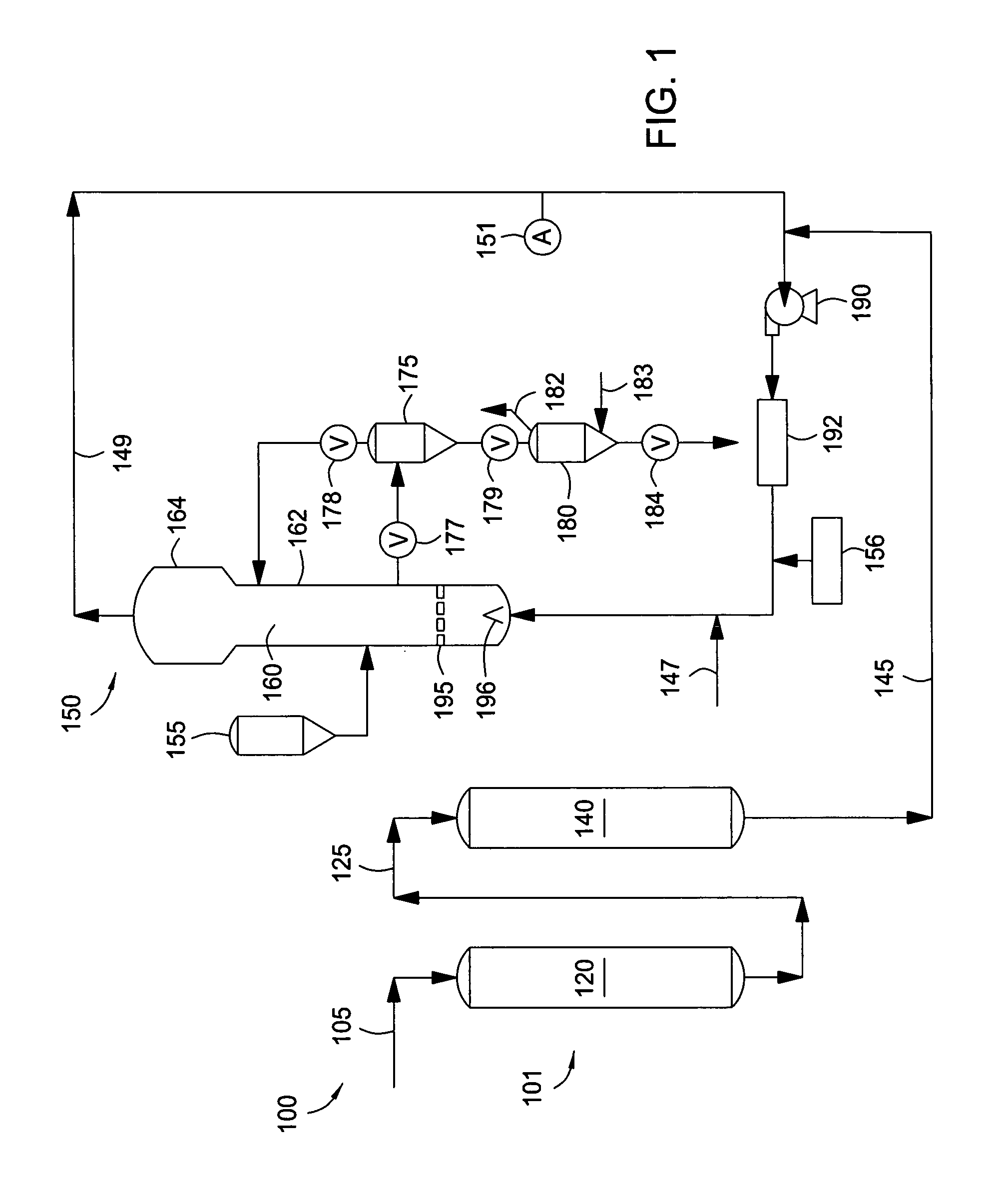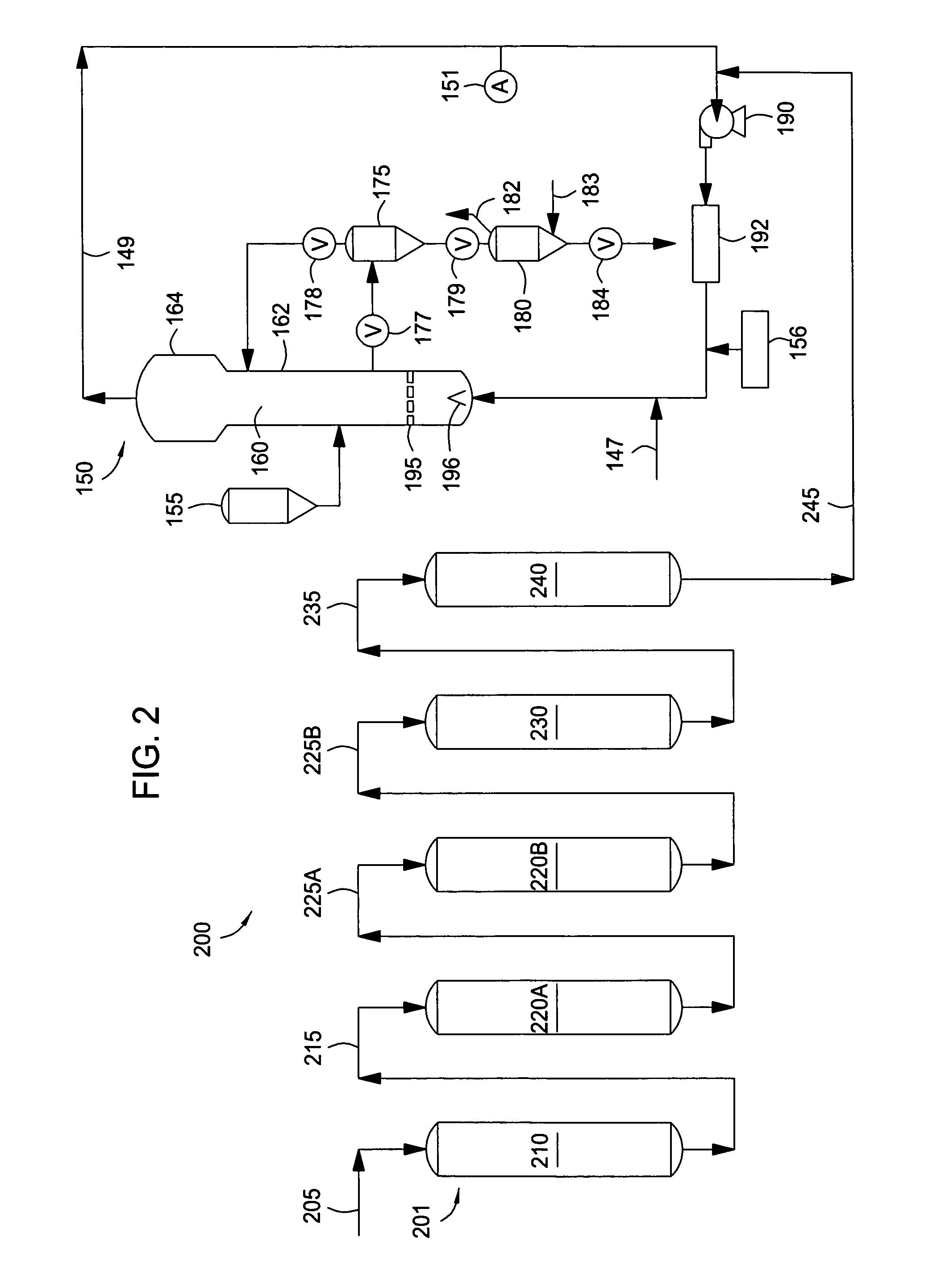Feed purification at ambient temperature
a technology of purification stream and feed stream, which is applied in the direction of hydrocarbon purification/separation, chemistry apparatus and processes, organic chemistry, etc., can solve the problems of increasing production costs, reducing catalyst activity and performance, and being highly sensitiv
- Summary
- Abstract
- Description
- Claims
- Application Information
AI Technical Summary
Benefits of technology
Problems solved by technology
Method used
Image
Examples
specific embodiments
[0074]In at least one specific embodiment, the method for olefin polymerization includes providing a feed stream comprising more than 0.1 ppm by volume of oxygen and 0.3 ppm by volume of water; passing the feed stream through a first packed bed to selectively remove at least a portion of the oxygen; passing the feed stream through a second packed bed to selectively remove at least a portion of the water, providing a purified feed stream comprising less than 0.1 ppm by volume of oxygen and 0.3 ppm by volume of water, wherein both the first and second packed beds operate at a temperature of from about 0° C. to about 50° C.; and then passing the purified feed stream to a polymerization reactor.
[0075]The method of the above paragraph, wherein the feed stream is not externally heated or cooled between the first and second packed beds.
[0076]The method of any of the above paragraphs, wherein the first packed bed comprises reduced copper supported on a metal oxide carrier and the second pac...
example 7
[0095]Nitrogen containing from 2.0 to 2.6 ppmv of oxygen was passed through a first packed bed of UT-2000 de-oxo material to remove oxygen. The packed bed had a diameter of 9.8 inches and length of 8 feet. The flow rate of nitrogen through the bed was about 300 lb / hr. The bed was maintained at a temperature between 13° C. and 30° C., and had an operating pressure of 550 psig. The nitrogen was then fed to a dryer to remove water using 13X molecular sieves from UOP. As shown in Table 1, the oxygen concentration measured in the purified nitrogen was below 5 ppbv and no increase in carbon dioxide concentration was detected.
example 8
[0096]Ethylene containing 10 ppmv of oxygen was passed through a packed bed of UT-2000 de-oxo material. The packed bed had a diameter of 9.8 inches and length of 8 feet. The flow rate of ethylene through the bed was 40 lb / hr. The bed was maintained at 20° C. and had an operating pressure of 550 psig. As shown in Table 1, the oxygen concentration measured in the purified ethylene remained below 5 ppbv and no increase in carbon dioxide concentration was detected.
PUM
| Property | Measurement | Unit |
|---|---|---|
| temperature | aaaaa | aaaaa |
| temperature | aaaaa | aaaaa |
| temperature | aaaaa | aaaaa |
Abstract
Description
Claims
Application Information
 Login to View More
Login to View More - R&D
- Intellectual Property
- Life Sciences
- Materials
- Tech Scout
- Unparalleled Data Quality
- Higher Quality Content
- 60% Fewer Hallucinations
Browse by: Latest US Patents, China's latest patents, Technical Efficacy Thesaurus, Application Domain, Technology Topic, Popular Technical Reports.
© 2025 PatSnap. All rights reserved.Legal|Privacy policy|Modern Slavery Act Transparency Statement|Sitemap|About US| Contact US: help@patsnap.com


